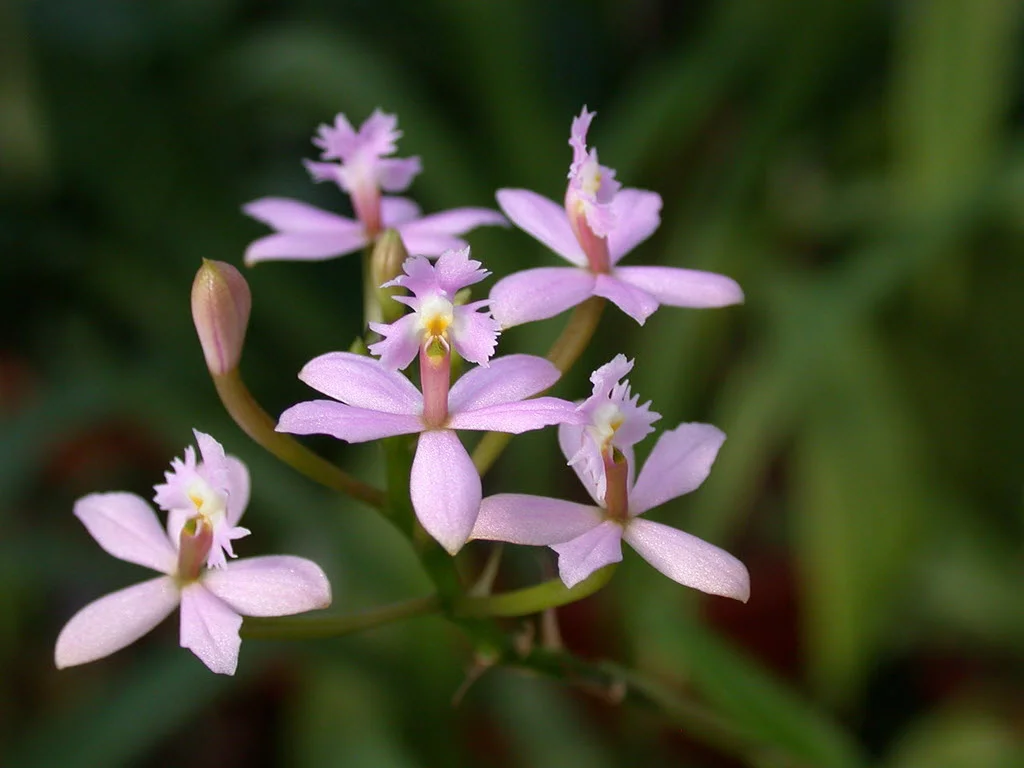Table of Contents
Pronounciation: BRASS–ee-ah
Other name: Spider Orchid
Introduction
It's easy to spot Brassias because of their spider-like looks. Unsurprisingly, these plants are also called Spider Orchids. They are named after after these arachnids because of their long, narrow, and spiky sepals that bring to mind spiders' legs.
Brassia verrucosa
But they look like spiders for a reason. It's Darwin's survival of the fittest in action.
Brassia orchids mimic the appearance of spiders in order to attract Pepsis and Campsomeris wasps. As spider-hunting insects, they would sting the labellum or lip of the orchid and attempt to capture it. During this unsuccessful attempt, the wasp inadvertently comes in contact with the flower's pollen and when it transfers to another Brassia, pollination occurs.
These fragrant plants are most commonly found in the Andes mountains of Peru, but they are also native to the West Indies, Central and Northern South America, and Mexico.
Temperature
Brassias like intermediate and warm climes. For daytime, their ideal temperatures range from 65°F to 75°F (18.3°C to 23.9°C), and at night, a temperature of 55°F to 65°F (12.8°C to 18.3°C) is best.
Light
Brassia orchids will thrive in a shaded and warm environment.
Pay attention to your plant's color as it is an indicator of health. If the leaves turn shades darker, then it means it lacks sunlight. On the other hand, when the plant takes more sunlight than necessary, its color turns brighter, leaning more into yellowish rather than green.
Direct sunlight, however, is also to be avoided as it can burn your orchid when exposed too long.
Water & Humidity
This orchid needs intermedate to high degrees of humidity, specifically 50-70 percent. Humidity trays are helpful if the area lacks humidity.
During the warm months or seasons and specially during its growing stage, it is advisable to mist its leaves in the mornings. Never let them dry out.
You can also water the orchid frequently every week but as with any orchid, do not let the roots soak for too long when contained in pots.
Feeding
Brassia orchids are a little bit more demanding on fertilizers than most orchids. This orchid will add more flourish from being saturated with a diluted solution from 1/2 strength of balanced fertilizer, four to five waterings in a row.
Potting
Brassias are best placed in hanging baskets as they like to be well-aerated and accessible to a fresh breeze. An ideal potting medium for these orchids is bark, coconut chips, perlite, or charcoal.
Repot after your plant has bloomed. Otherwise, they don't need to be repotted often — once every 2 years is enough or when its potting medium is no longer doing its job. Watch out for decomposed potting material or if your plant is no longer draining properly.
Video
Overall, these rather rare orchids are somewhat difficult to grow and propagate. If you can mimic their native tropical environment though, then you increase your chances of your Brassias fluorishing. Here is a video to help you along.
The wide variety of orchid types and shapes never fails to astound. See more orchid variieties in our comprehensive list of the different types of orchids.
Related Orchid Articles












